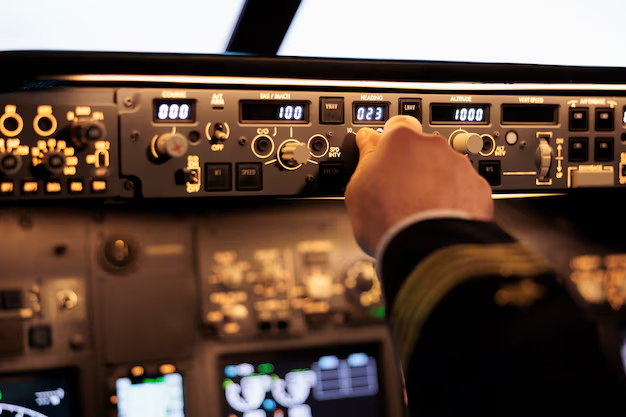Aerospace PCB Assembly: From Design to Supplier Selection
The aerospace industry is continuously advancing, exploring space and beyond Earth’s limits. In aerospace applications, PCBs play a crucial role, handling operations and providing electrical and mechanical support between various electronic components. The importance of IoT and electronics has increased alongside the growing aerospace sector. Precision, reliability, and proper planning are essential in aerospace PCB assembly.
What is Aerospace PCB Assembly?
Aerospace PCB assembly involves manufacturing and assembling Printed Circuit Boards for aerospace applications, ensuring they function well in harsh environmental conditions. The primary goal is to identify and fix flaws before the boards reach customers or users. Aerospace PCB assembly offers several advantages over traditional methods, including initial day functionality that saves labor costs. Successful testing eliminates the need for extra time and money on parts or labor later in the assembly process. Manufacturers spend considerable time planning and designing before production, ensuring customer satisfaction with quality products and establishing a strong reputation.

Applications of Aerospace PCB Assembly
Aerospace PCB assembly is used across various technologies and equipment in the aerospace industry, functioning fully in extreme operating conditions such as:

- Temperature sensors
- Communication systems
- Radar installations
- Satellite technologies
- Battery Management Units (BMS)
- Flight instruments and equipment
Benefits of Aerospace PCB Assembly
Aerospace PCB assembly offers significant benefits, including:
- Precision Engineering: Critical for accuracy and precision, aerospace PCBs must resist harsh environments. Intricate designs and careful soldering ensure circuitry operates under challenging conditions, preventing fatal mistakes.
- Withstand Harsh Conditions: High-temperature laminate substrates, such as copper and aluminum, help boards survive extreme temperatures. Specialized materials mitigate radiation effects.
- Redundancy and Reliability: Designing aerospace units with backup options ensures smooth operation even if a component fails. Rigorous testing and quality control measures reduce the risk of failure.
Materials Required for Aerospace PCB Assembly
Aerospace PCB assembly requires materials that can withstand space and airborne conditions, focusing on thermal management, shock absorption, and overall durability. Key materials include:
- Substrates: Aluminium and copper are prominent options, with high-temperature PCBs essential for handling extreme conditions.
- Surface Finishes: Protective coatings prevent oxidation and corrosion, safeguarding exposed copper areas. Thermal compounds insulate heat sinks effectively.
- Rigid-flex PCBs: Combining rigid and flexible PCBs ensures a secure connection between circuit parts, guaranteeing polarity and contact stability.
Design Factors of Aerospace PCB Assembly
Optimal performance and reliability in aerospace PCB assembly depend on critical design factors:
- Compliance with IPC Class 3 standards: Designed for electronic devices operating in harsh environments.
- Frequency Compatibility: Differentiating high and low-frequency components prevents interference.
- Material Selection: Choosing substrates like copper laminates or aluminum for strength, and materials with a low coefficient of thermal expansion to minimize size changes from temperature fluctuations.
- Shock Absorption: Using shock-absorbing materials like conformal coatings to protect components from vibrations.
- Surface Finish: Applying protective coatings to prevent oxidation and corrosion, and using thermal compounds to insulate heat sinks.
- Electromagnetic Shielding: Incorporating EMI shielding with proper routing, grounded planes, and shielding enclosures.
Factors to Consider When Selecting an Aerospace PCB Assembly Supplier
Selecting the right aerospace PCB assembly supplier is crucial for performance and reliability. Consider the following factors:
- Standards Compliance: Ensure suppliers meet relevant standards such as AS9100, ISO 9001, and IPC-A-610.
- Experience and Expertise: Choose suppliers with significant knowledge and a proven track record in aerospace PCB assembly.
- Quality Control and Testing: Verify the supplier’s quality control process and testing procedures align with industry standards.
- Material Selection: Ensure suppliers use materials that comply with aerospace requirements.
- Delivery Time and Communication: Check the supplier’s ability to meet deadlines, provide clear communication, responsiveness, and continuous support.
Why Choose Camtech PCB?
Camtech PCB offers precise and reliable aerospace PCB assembly, taking your projects to new heights with top-notch expertise. Our certified quality and advanced technology ensure excellence in every circuit. Reach out to Camtech PCB today for superior aerospace innovation!
Conclusion
Aerospace PCB assembly is vital for supporting and operating electronic equipment under challenging conditions, ensuring reliability through precision engineering. Material selection determines PCB reliability, meeting standards like IPC Class 3 and other aerospace requirements. Choosing the right manufacturer guarantees high-quality PCB for aerospace applications, with manufacturers meeting specific standards for quality assurance.
CONTACT US
For customers who require new products with complex circuit boards and have tight release schedules, we provide technology and expertise from prototype to production. You can contact us through the methods below to discuss your project with our technical experts immediately. We will be in touch within 24 Reply within hours.
If you already have documentation for your PCB or PCBA related needs, please submit a quick quote for a free evaluation.


